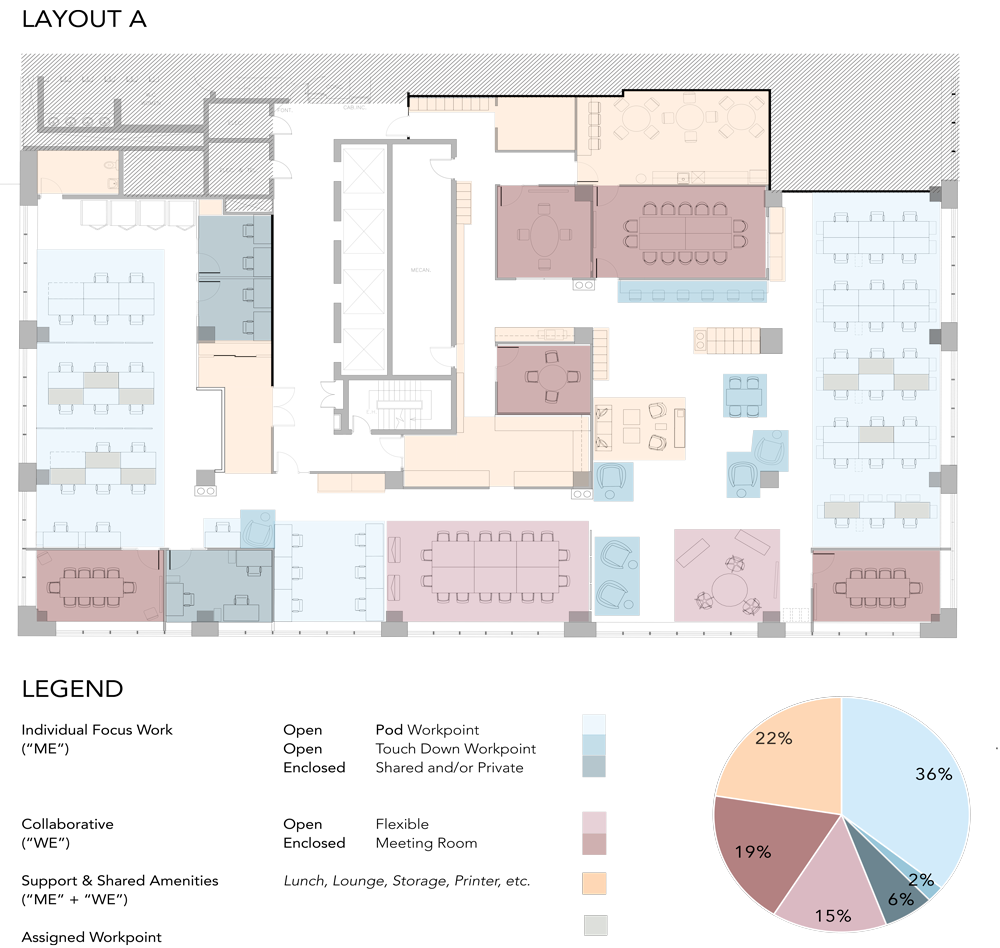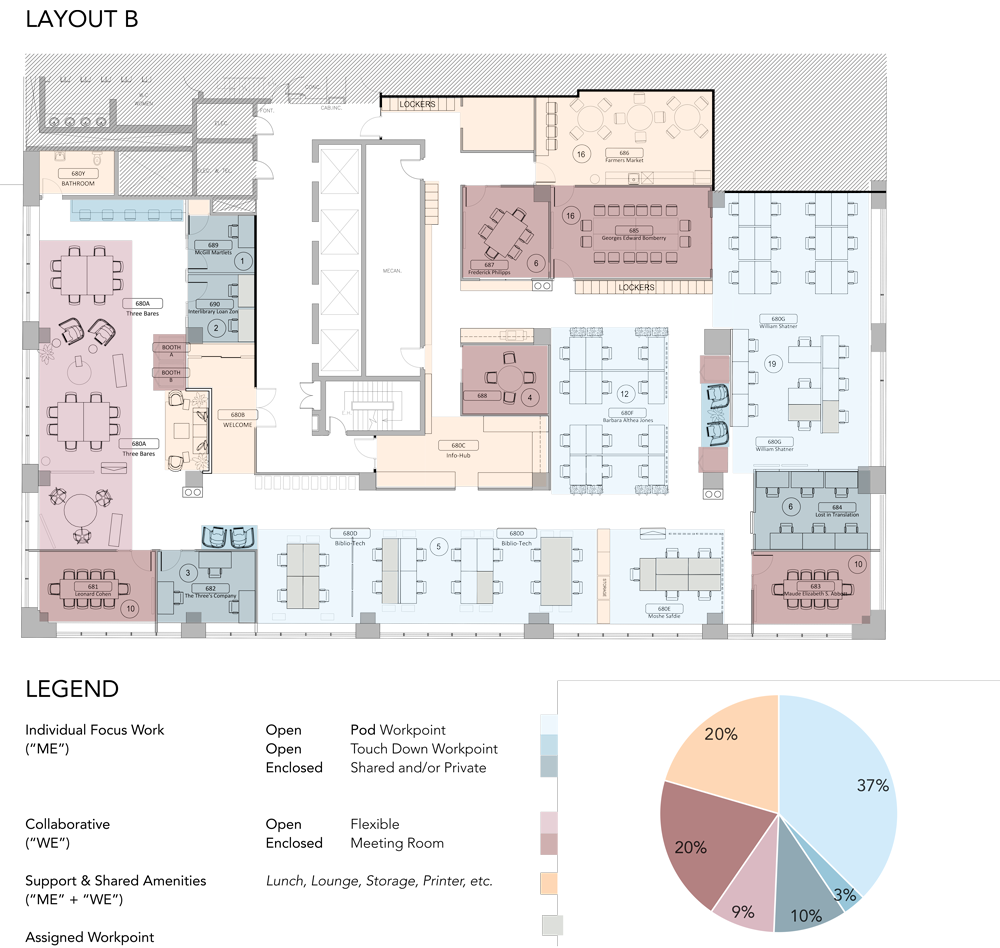The following information concerns the NMW Pilot Project’s flexible and shared workspace’s interior, developed and improved along various iterations. We hope you will find helpful information and responses to questions on design and spatial strategies, as outlined in the pilot project.
If other spaces at McGill University were reconfigured according to new models of work, the application and considerations listed below would vary depending on the nature of the project, the budget, and the client’s needs. The insights and advice provided here are based on discoveries from the pilot project and may evolve as new information becomes available.
We began occupying the Pilot Project workspace space on October 4th, 2021. The space reflects an open, shared, and collaborative model. The pilot is a living ecosystem where participants are called to test a modernized working environment.
To optimize space occupancy and offer a variety of configurations that responded to a range of user needs, we created a multifunctional, multimodal, and adaptable environment that can be easily transformed.
In order to adapt to this hybrid environment, substantial research related to space was to be done.
- While we do not live in a completely ‘paperless’ environment, it is fair to say that paper has become increasingly unnecessary.
- Being agile at manipulating technologies to allow for working from home and on-site was a priority.
- We aimed to develop personal, social, and work etiquette for a shared workspace.
Build. Test. Learn. Build
In December 2021, two months after the Pilot Project space opened, a session was held for participants to express their initial impressions of the space.
This session led us to rethink the space in order to create what we call "neighbourhoods" for teams. Neighborhoods allow teams to work more closely together by providing suitable spatial distribution for collaborative work.
The suite has been almost completely reconfigured simply by moving the furniture in a more organic way, and by adding some greenery and space dividers.


Users helped to name the spaces and rooms of the workspace, which were named after the iconic persons and places of McGill. Signage was installed to reflect these changes.
Today's workplaces need to be agile, resilient, and easily adaptable over time.
Design choices should consider the diverse and potentially evolving needs of employees in order to provide a productive and welcoming spatial experience. For example, when a workspace incorporates fully flexible office furniture, they are anticipating and welcoming the space’s evolution.
Adaptability, long-term sustainability, and integrated technology must be part of the design solution.
At the Pilot Project workspace, roles, seniority, and job titles do not determine space occupancy. A sense of equity, inclusivity, and collaboration must be present to support new ways of working.
In summary, the Pilot Project workspace:
- Incorporates fully flexible office furniture
- Is highly adaptable to the unforeseen needs of employees (health measures, technical requirements, etc.)
- Maximizes the use of space through desk sharing
- Plans for future changes
- Can accommodate a high degree of activity
- Adaptability
- Durability
- Technology
Key design concepts
Fixed vs. Flexible: To be more resilient, workspaces must be mobile and flexible. Fixed spatial configurations were found to be obsolete and not suitable for a pilot project space, where the goal was to welcome back employees from various units after two years of working from home.
Open vs. enclosed: The work environment must provide both closed spaces for individual work and open spaces for collaboration.
Physical presence and digital tools: In a hybrid world, it is essential to create inclusive experiences by providing collaborative and remote work tools. A room reservation system, a sound masking system, and hybrid AV equipment must be included.
Individual spaces and shared spaces: The workspace should promote collaboration and individual work in the same way, as both are essential to the unit’s effectiveness, wellness, and growth.
